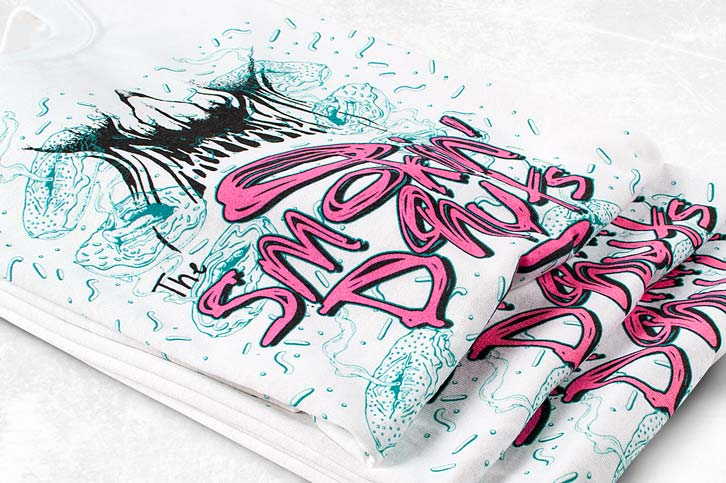5 Things To Consider Before Picking A T-Shirt Printing Method
Customized t-shirts are a popular way to express individuality, promote brands, or commemorate special events. From vibrant graphics to intricate details, custom t-shirt printing transforms plain shirts into unique and meaningful pieces that make a statement. Whether for personal expression, branding, or special events, it offers endless possibilities. Choosing the right t-shirt printing method is crucial to achieving the desired quality and durability. With various techniques available, it's important to consider several factors before making your selection.
1. Fabric Type and Quality
The type of fabric you plan to print on plays a significant role in determining the ideal printing method. Different fabrics react differently to various printing techniques. For example, cotton, one of the most common t-shirt materials, works well with most methods, including screen printing, direct-to-garment (DTG) printing, and heat transfer. However, if you're dealing with synthetic materials like polyester, sublimation printing may be a better choice due to its ability to bond with synthetic fibers. Always consider the fabric's composition, thickness, and texture when choosing a printing method to ensure the design adheres properly and looks great.
2. Design Complexity and Detail
The complexity and level of detail in your design can heavily influence your printing method choice. Here's a breakdown:
Screen Printing: Ideal for simple designs with bold colors. It excels in producing vibrant, long-lasting prints but may not be suitable for intricate or multi-color designs due to the need for separate screens for each color.
Direct-to-Garment (DTG) Printing: Perfect for highly detailed or intricate designs with many colors. DTG printing uses advanced inkjet technology to print directly onto the fabric, making it a versatile choice for complex artwork.
Heat Transfer: Suitable for designs with fine details, gradients, and photographs. It involves printing the design onto a transfer paper and then applying it to the garment using heat. While it can capture intricate details, the durability may vary depending on the quality of the transfer.
Sublimation Printing: Best for all-over prints or designs with gradients and detailed patterns. Sublimation ink turns into gas when heated, bonding with the fabric's fibers and allowing for seamless printing of intricate designs.
3. Order Quantity
The quantity of t-shirts you need to print can influence your choice of printing method. Here's how:
Screen Printing: Ideal for large quantities due to its cost-effectiveness for bulk orders. It requires creating separate screens for each color, which can be time-consuming and costly for small runs.
DTG Printing: Suited for small to medium-sized orders since it doesn't require screens and allows for easy customization. However, it may not be as cost-effective as screen printing for very large quantities.
Heat Transfer: Versatile for both small and large orders. While it's suitable for custom prints, the quality and durability may vary depending on the transfer method and equipment used.
Sublimation Printing: Suitable for medium to large orders, especially if you want all-over prints. Sublimation requires special equipment and materials, making it more cost-effective for higher quantities.
4. Color Variations and Consistency
The consistency and vibrancy of colors in your design are essential for achieving the desired visual impact. Consider the following:
Screen Printing: Known for its ability to produce consistent and vibrant colors. However, the number of colors used can affect the complexity and cost of the process.
DTG Printing: Offers excellent color accuracy and consistency, making it suitable for designs with a wide range of colors and gradients.
Heat Transfer: Color consistency may vary depending on the transfer method and equipment used. Ensure you choose a reliable provider for consistent results.
Sublimation Printing: Provides vibrant and consistent colors, making it a great choice for colorful and detailed designs.
5. Budget and Cost Considerations
Your budget is a significant factor when selecting a t-shirt printing method. Each method comes with its own cost structure:
Screen Printing: Typically cost-effective for large orders but may become less economical for small runs due to setup costs.
DTG Printing: Suitable for small to medium-sized orders, but the cost per shirt can be higher than screen printing, especially for bulk quantities.
Heat Transfer: Offers flexibility but can vary in cost depending on the quality of transfers used and the equipment employed.
Sublimation Printing: While it may require an initial investment in specialized equipment, it becomes cost-effective for medium to large orders due to its efficiency and vibrant results.
In conclusion, selecting the right t-shirt printing method is a critical decision that should be based on your specific needs, including the fabric type, design complexity, order quantity, color requirements, and budget. By carefully considering these factors, you can ensure that your custom t-shirts meet your expectations in terms of quality, durability, and visual appeal. Whether you're printing t-shirts for personal use, promotional purposes, or as part of your business, making an informed choice will help you achieve the best results.




Comments
Post a Comment